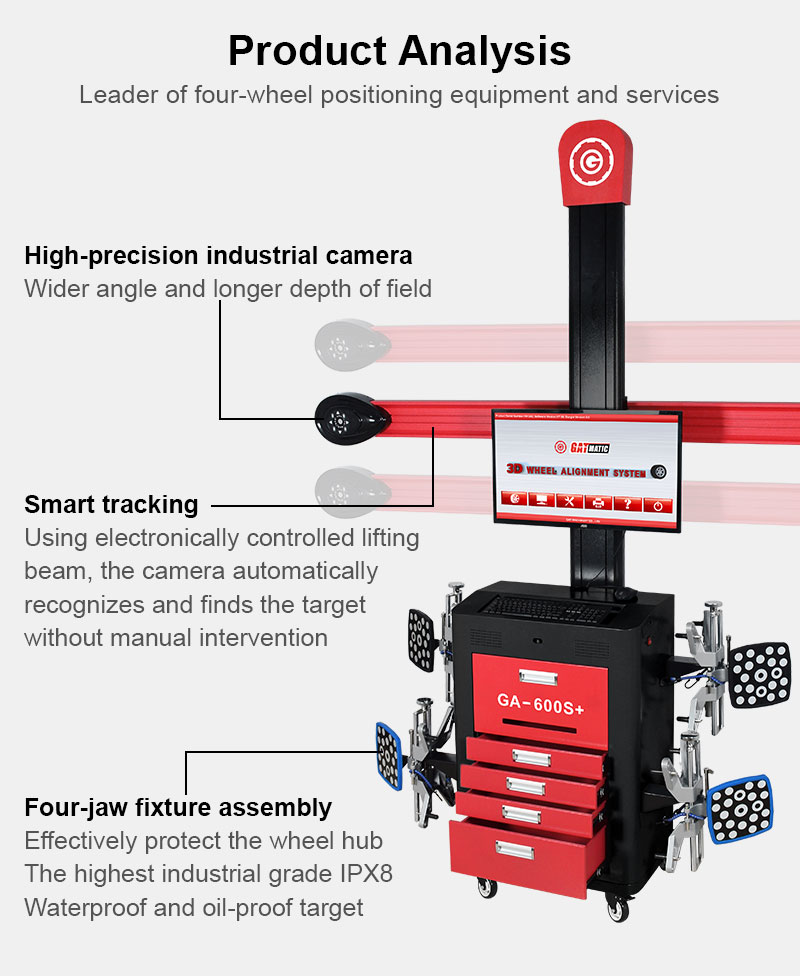What happens if I don’t align my wheels after getting new tires?

When people think about tire maintenance, they usually focus on ensuring the tires are properly inflated, rotated, and replaced when necessary. However, one critical aspect often overlooked is wheel alignment, especially after installing new tires. Many vehicle owners assume that after getting new tires, they can simply hit the road without addressing alignment. This misconception can lead to a variety of problems, both for the vehicle and the driver. In this essay, we will explore what happens if you don’t align your wheels after getting new tires, and the potential consequences for your car’s performance, safety, and your wallet.
I. What is Wheel Alignment?
Before diving into the consequences of neglecting wheel alignment, it is essential to understand what wheel alignment is and why it matters. Wheel alignment refers to the adjustment of the vehicle’s suspension system—the part that connects a vehicle to its wheels. Alignment isn’t about adjusting the tires or wheels themselves but rather about correcting the angles of the wheels to ensure they make proper contact with the road.
There are three primary aspects to wheel alignment: camber, caster, and toe. Camber refers to the inward or outward angle of the tire when viewed from the front of the vehicle. Caster is the angle of the steering pivot when viewed from the side, and toe refers to the angle of the tires in relation to each other, when viewed from above. When any of these angles are off, it affects how the tires make contact with the road, impacting handling, safety, and tire wear.
II. Consequences of Not Aligning Your Wheels After Getting New Tires
1. Uneven Tire Wear
One of the most immediate and costly consequences of not aligning your wheels after getting new tires is uneven tire wear. Proper alignment ensures that your tires wear down evenly across the tread. When the alignment is off, certain parts of the tire may experience more friction and pressure than others, leading to faster wear on specific areas. This uneven tread wear will shorten the lifespan of your tires, forcing you to replace them far sooner than if they had been properly aligned. Given the cost of tires, this can become an unnecessary and significant expense.
2. Decreased Fuel Efficiency
Misaligned wheels can also have a direct impact on your vehicle’s fuel efficiency. When wheels are out of alignment, they don’t roll as smoothly, and this increases what’s known as rolling resistance. With greater rolling resistance, your engine has to work harder to keep the car moving, leading to an increase in fuel consumption. Over time, the small increases in fuel use add up, resulting in more frequent trips to the gas station and higher fuel costs.
3. Poor Vehicle Handling
Another serious consequence of neglecting wheel alignment is poor vehicle handling. Misalignment can cause the steering wheel to pull to one side, making it difficult to keep the car straight. This pulling effect is not only inconvenient, but it also creates safety risks, particularly at high speeds or in emergency situations where quick steering adjustments are necessary. Reduced responsiveness from the steering system can make driving more difficult and dangerous, increasing the likelihood of accidents.
4. Vibration and Ride Discomfort
Drivers may also experience vibration or shaking in the steering wheel when their wheels are misaligned. This is due to uneven contact between the tires and the road, which causes vibrations that are transmitted up through the vehicle’s suspension and into the cabin. While this may start as a minor inconvenience, over time, the discomfort increases, making even short trips uncomfortable. Long drives, in particular, can become exhausting and physically unpleasant for both the driver and passengers.
5. Potential Damage to Suspension Components
In addition to these issues, not aligning your wheels after getting new tires can cause stress on your vehicle’s suspension system. Misalignment forces parts like shocks, struts, and other suspension components to work harder than they should, leading to premature wear. In extreme cases, this can cause mechanical failures that require costly repairs. While alignment is a relatively inexpensive maintenance procedure, failing to do so could lead to expensive repairs, not only to your tires but also to your vehicle’s suspension system.
6. Safety Risks of Driving Without Proper Wheel Alignment
When driving with misaligned wheels, you are also putting yourself and others at greater risk. One significant safety concern is that misalignment can increase stopping distances. In an emergency braking situation, every extra foot counts, and misalignment could mean the difference between avoiding an accident and causing one. Additionally, in wet or slippery conditions, misaligned tires are more prone to skidding because they are not making proper contact with the road surface. Combined with reduced handling ability, this creates a recipe for dangerous driving conditions.
Another concern is that wheel misalignment affects the overall stability of the vehicle, especially at higher speeds. Misaligned tires can cause the car to drift or sway more than usual, making it difficult to maintain control, particularly when driving on highways or taking sharp turns.
III. How to Know if You Need a Wheel Alignment After New Tires
After getting new tires, it’s always a good idea to check if your wheels need an alignment. There are several warning signs that may indicate the need for an alignment. If your vehicle is pulling to one side, if the steering wheel is off-center, or if you notice uneven tread wear after just a few hundred miles, it’s likely that your vehicle’s alignment is off. Additionally, if you experience vibrations in the steering wheel, it’s worth getting the alignment checked.
Most mechanics recommend having an alignment check every 6,000 to 10,000 miles, or whenever you get new tires. Regular checks can prevent many of the issues outlined above and save you money in the long run.
Conclusion
Wheel alignment is an essential aspect of vehicle maintenance that should not be neglected, especially after getting new tires. Failing to align your wheels can lead to a host of problems, including uneven tire wear, reduced fuel efficiency, poor handling, ride discomfort, and damage to suspension components. Additionally, misaligned wheels can create significant safety risks, increasing the likelihood of accidents. By ensuring proper wheel alignment, you can extend the life of your tires, improve your vehicle’s performance, and most importantly, stay safe on the road.
Get Access Now: https://www.gat-matic.com
FAQs
1. Do I really need a wheel alignment after getting new tires?
- Yes, it is highly recommended to get a wheel alignment after installing new tires. Proper alignment ensures even tire wear, improves handling, and prevents potential damage to suspension components. Skipping alignment can result in uneven wear, decreased fuel efficiency, and poor vehicle performance.
2. What are the signs that my wheels need alignment?
- Common signs that your wheels may need alignment include:
- The car pulls to one side while driving.
- The steering wheel is off-center even when driving straight.
- Uneven or rapid tire wear.
- Vibration or shaking in the steering wheel.
3. How often should I get my wheels aligned?
- It’s typically recommended to have your wheels aligned every 6,000 to 10,000 miles or whenever you get new tires. However, if you notice any signs of misalignment, such as pulling or uneven tire wear, you should have it checked sooner.
4. What happens if I don’t align my wheels after getting new tires?
- Failing to align your wheels can cause uneven tire wear, reduce your vehicle’s fuel efficiency, make the car harder to handle, cause vibrations in the steering wheel, and increase the wear on your suspension system. Over time, this can lead to expensive repairs and safety risks.
5. Can skipping wheel alignment damage my car?
- Yes, not aligning your wheels can lead to damage to your suspension system and tires. Misalignment forces components such as shocks and struts to work harder than necessary, leading to premature wear. Over time, this can result in costly repairs.
6. How much does a wheel alignment typically cost?
- A standard wheel alignment typically costs between $50 and $100, depending on the vehicle and the service provider. This is a relatively low cost compared to the potential expenses of premature tire replacement or suspension repairs due to misalignment.
7. Can misalignment affect my car’s fuel efficiency?
- Yes, misaligned wheels can increase rolling resistance, which makes your engine work harder and consume more fuel. Aligning your wheels helps ensure smoother driving, which improves fuel efficiency and saves money on fuel in the long run.
Describe Your Needs In Detail!
We will carefully evaluate your needs and give professional solutions.


